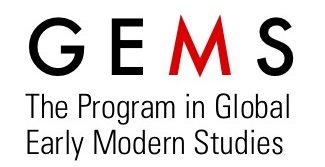Mar 12 | Ishai Mishory, “Jews, Humans and Animals: A View from Early Hebrew Printing”
Ishai Mishory (Columbia)
March 12, 2025, 6:00 PM
Room C197
The Graduate Center, CUNY
Jews Humans and Animals: A View from Early Hebrew Printing
 This talk examines the first-ever illustrated printed book in Hebrew: Gershom Soncino’s 1490-1491 edition of medieval Spanish poet Isaac ibn Saḥula’s Meshal ha-ḳadmoni (“Fable of the Ancient”). While the talking animals of this a fable compendium are easily identifiable textually as “Jewish” – they are conversant not simply in the finer points of Hebrew and Aramaic biblical exegesis and Talmudic argumentation, but indeed in medieval Aristotelian philosophy – are they also understood visually as “Jewish”? The talk examines the ‘translation’ of their identity into the Renascent, and specifically northern-Italian, ambit of the book’s printing. Can the rise in ‘signification anxiety’ around Jews and other ‘others,’ which engulfed 15th-century Italian city-states, help us make sense of these animals’ visual representation – and of larger Italian Renaissance ideas of the ‘human’?
This talk examines the first-ever illustrated printed book in Hebrew: Gershom Soncino’s 1490-1491 edition of medieval Spanish poet Isaac ibn Saḥula’s Meshal ha-ḳadmoni (“Fable of the Ancient”). While the talking animals of this a fable compendium are easily identifiable textually as “Jewish” – they are conversant not simply in the finer points of Hebrew and Aramaic biblical exegesis and Talmudic argumentation, but indeed in medieval Aristotelian philosophy – are they also understood visually as “Jewish”? The talk examines the ‘translation’ of their identity into the Renascent, and specifically northern-Italian, ambit of the book’s printing. Can the rise in ‘signification anxiety’ around Jews and other ‘others,’ which engulfed 15th-century Italian city-states, help us make sense of these animals’ visual representation – and of larger Italian Renaissance ideas of the ‘human’?
Ishai Mishory is a scholar of Jewish history and religion who focuses on early modern Italy and the early printed book. In the Fall, he will be the incoming Assistant Professor of Judaism and Sustainability at San Diego State University, and he is presently a postdoctoral lecturer at Columbia University. His PhD dissertation has received the 2025 Young Scholar Award of the Salo and Jeannette Baron Award for Scholarly Excellence in Research of the Jewish Experience, and he previously received, among other awards, a Fulbright Fellowship for research in Italy. Mishory has presented at numerous academic conferences in the United States and abroad, and is currently at work on his first monograph, which explores the secular aspects of several books printed by Jewish-Italian humanist Gershom Soncino. A translator of academic texts and comic books, he has also illustrated several children’s books.
| Co-sponsored with the Art History PhD Program and the Certificate in Global Early Modern Studies |




